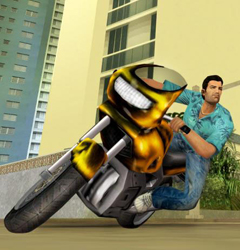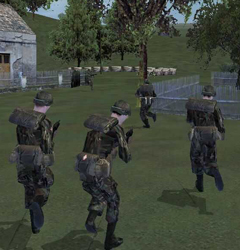
Grand Prix Legends
Developer: Papyrus Design GroupYear: 1998
Widely recognised as one of the most realistic and crazy racing simulators ever designed, Grand Prix Legends may have come out in the late 90s, but it bases itself in the late 60s instead. The super-lightweight cars have a distinctly old fashioned feel and retro appeal, as do the absolutely massive tracks that are all based on real locations.
Grand Prix Legends isn’t a game that’s going to be suitable for everyone though, as the old-school cars are balanced rather...uniquely and the game will seem purely broken and unfair to anyone unprepared for it. If you’ve been raised on a diet of Gran Turismo and Race Driver: GRID then the slippery wheels and lightweight frames of the cars in Legends will feel alien and uncontrollable.
In reality though, the in-game cars are all perfect replicas of their real counterparts, as are the circa 1967 tracks, which include the infamous 14 mile long Nürburgring Nordschleife track in Germany. As in real life, the amount of practice and skill required to get anywhere in Legends is huge, so consider yourself warned that this really isn’t a racer for the faint hearted.
Grand Theft Auto: Vice City
Developer: RockstarYear: 2002
OK, so Grand Theft Auto: Vice City can’t claim to have an insanely detailed physics system or selection of real-life cars, but nor can Grand Prix Legends claim to have the best soundtrack ever assembled for a game either. Vice City can’t claim to be the latest or most beautiful Grand Theft Auto game to date as well, but at least it’ll run on a PC without requiring limitless log-ins.
Set in the perpetual sunrise of the 1980s, Vice City is heavily influenced by the likes of Scarface and Miami Vice and it shows. The sprawling urban landscape that players have access to is one of gluttony, social excess and pastel-coloured blazers – in other words a perfect place to build a criminal empire.
What puts Vice City ahead of San Andreas and GTA IV though is the easy balance struck between core gameplay and the ad-hoc police chases that players inevitably spiral towards. You don’t have to answer your mobile phone every five minutes and take your cousin bowling, nor do you have to work on improving your physique or seducing women. There’s just you and a city full of ramps and guns. Sometimes that’s all you need.
Operation Flashpoint: Cold War Crisis
Developer: Bohemia Interactive StudioYear: 2001
Operation Flashpoint is still one of the best military simulations out there, especially when it comes to multiplayer, despite being a good eight years old at this stage. Sure, it looks a little dated, but the huge levels and focus on creating a realisitic environment makes sure that the game compensates for the low polygon count. Every single weapon, ability and vehicle is based on a real-life counterpart, with the strengths and flaws of each and every weapon being faithfully bought into the game for players to consider.
Describing the gameplay itself is a pretty difficult task, as players can take on a wide variety of roles and are encouraged to specialise heavily within a larger team, so we’ll just say that Operation Flashpoint is the very definition of a tactical sandbox shooter. You can snipe, you can assault, you can sneak, heal, drive, plan, navigate or support – it all just depends on what you want to do.
Codemasters has been feverishly at work on a new game in the series lately, dubbed Dragon Rising and though the project has been met with some cynicism by the original development team we still hope the sequel will do the first game justice. If not, then at least there's still the original to fiddle with, ugly as it is.

MSI MPG Velox 100R Chassis Review
October 14 2021 | 15:04












Want to comment? Please log in.